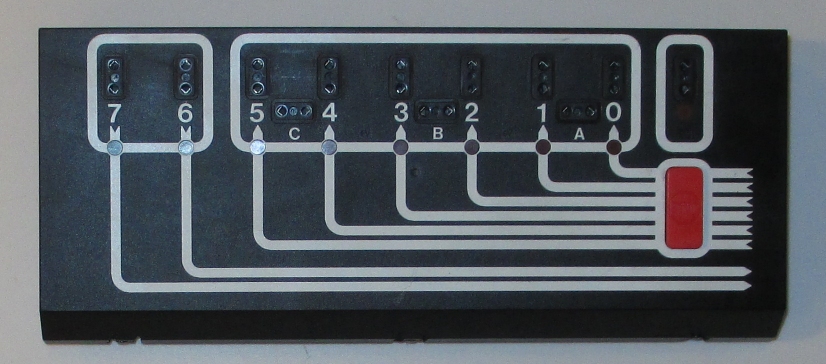Difference between revisions of "Lego Interactive Interface-A Driven via Arduino"
| Line 6: | Line 6: | ||
=== First Step === | === First Step === | ||
==== Opening the "brick" ==== | ==== Opening the "brick" ==== | ||
| + | The first step was to open up the brick. This was done relatively easy by cutting a number of tabs along a seam. | ||
[[File:LBAP_brick_guts.jpg]] | [[File:LBAP_brick_guts.jpg]] | ||
| + | |||
| + | Now, cutting the brick open was not really necessary since a number of web sites already document this piece of technology. The pin-outs and voltage specs can be found through a series of simple Google searches. Below is a site used for reference. | ||
| + | |||
| + | [http://lukazi.blogspot.com/2014/07/lego-legos-first-programmable-product.html] | ||
| + | |||
| + | From this link one can navigate to a number of others sites with information about this product. | ||
| + | Among them is this page with pin-outs. | ||
| + | |||
| + | [http://isodomos.com/Lego-Sets/1093.html] | ||
Revision as of 21:52, 17 January 2016
Backstory
A number of years ago, a visitor to the LVL1 Hackerspace brought in a box of old Lego items that their father had in storage. The hope was that they would be an interesting project to build something and then use it to demonstrate engineering to children at a science center. The central element was an Interface-A (70455) control unit. The Lego collection also included the Apple II interface card. A working Apple II was not available, so someone suggested driving the "brick" with an arduino.
First Step
Opening the "brick"
The first step was to open up the brick. This was done relatively easy by cutting a number of tabs along a seam.
Now, cutting the brick open was not really necessary since a number of web sites already document this piece of technology. The pin-outs and voltage specs can be found through a series of simple Google searches. Below is a site used for reference.
From this link one can navigate to a number of others sites with information about this product. Among them is this page with pin-outs.

